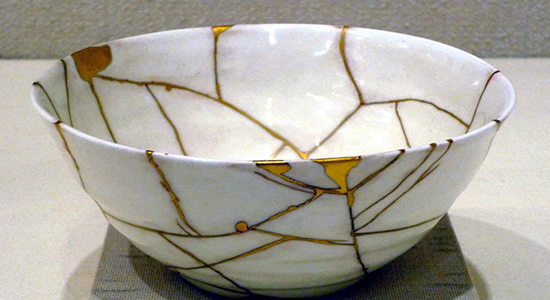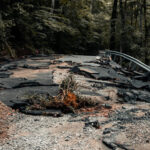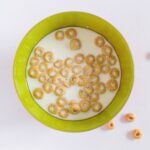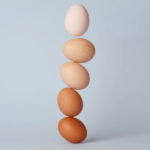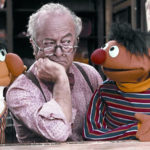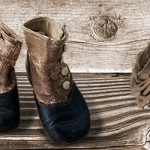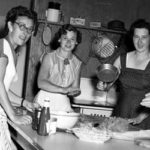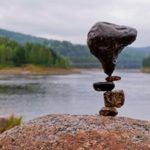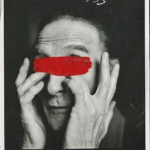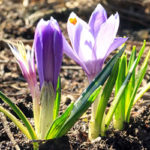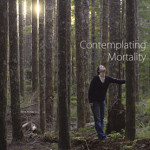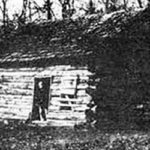I chipped my favorite coffee mug a while back. It really upset me since it had been a gift from a favorite friend 35 years ago. Since the cup was black I found a permanent Sharpie and used it to color the exposed bisque. Viola. I could barely see the chip!
However, the chip was located right where my lower lip hit the cup when drinking – so the permanent black ink was soon rubbed off and the flaw again stared at me every morning. Being right-handed I couldn’t reverse the cup and not see it. And I couldn’t bear throwing it away. I simply had to live with it.
With time I reacquainted myself with my cup – and now I drink out of it with pleasure. This all happened with delayed introspection. I just stumbled through the process and FINALLY realized, it was perfectly ok for my cup to be imperfect. In fact, I now view my chipped cup as charming, and I love it even more.
With my experience in mind, I enjoyed reading Omid Safi’s “The Pause” column about: mending what is broken with gold. I hope you enjoy it as well.
Illuminating the Beauty in Our Broken Places
By Omid Safi
I have a favorite coffee mug that I use every morning for making my own cup of coffee. The ritual pleases me. My own coffee, ground and brewed fresh. The aroma of the coffee that fills my home. My fingers wrapped around the cup. Soft music playing. It’s a lovely way to start my morning.
Recently my beloved cup got a chip in it. I don’t remember where the chip came from, but I look at it each time I go to drink from the cup. Thinking about the chipped cup makes me think a lot about cracks. Cracked spaces. Cracked hearts.
I have been writing, for a while, about the theology of cracked spaces, about failing and failing better. It’s a realization that life is not a smooth, linear climb to the mountaintop of “success,” but often a messy, beautifully messy series of falling flat on one’s face, bouncing back, and falling slightly less awkwardly the next time. (And the next, and the next.)
So thinking about cracking and breaking and chipping (and healing) has been with me for a while. But until recently I had not thought about how there is a beauty that can emerge from the cracked spaces. That there is a way to illuminate cracked cups, spaces, hearts.
Turns out that the Japanese have been doing so for the last 400 to 500 years. It’s called kintsukuroi.
It’s a Japanese art form. Cups, chalices, mugs, dishes that are cracked are repaired with gold or silver lacquer. Kintsukuroi is also referred to as kintsugi, meaning “golden repair.”
There is an interview with a 27-year-old Kintsugi master, who explains how this works:
“It’s very important that we understand the spiritual backgrounds or the history behind… the material.”
This is interwoven with the philosophy of wabi-sabi, which means “to find beauty in broken things or old things.”
I wonder what it would be like to live knowing that our own hearts are like these cracked, illuminated, and healed dishes. Oh, it is so sweet and innocent to love a heart that has never been broken.
There is a simplicity, a childlike naïveté to that kind of love. And there is a love, a mature love, a whole love, a healed love, to loving someone who has been broken and healed, made whole again, and where the cracks are golden.
We see what was once broken and is now healed. Sometimes they are stronger, more beautiful, more whole for the cracks showing up.
Desmond Tutu was right. We are all wounded healers. Cracked open, healed, and healing wounded healers.
We value success, wholeness. Unlike this Japanese art form, we don’t yet have a way of looking for what was once broken and has been healed and illuminated. How lovely would it be to find that a cracked and illuminated cup can be even more beautiful than a whole cup. How wise to realize that the broken hearts, illuminated and made whole, can be even lovelier.
Give me someone who knows their own vulnerability and sees mine.
Give me someone whose cracked spaces are golden.
Give me someone who has helped do kintsugi to my cracked spaces.
Give me someone who is open to me doing kintsugi to their cracked heart.
So friends, wabi-sabi me.
Let me wabi-sabi you.
Let’s repair each other.
Let’s seek what’s cracked in each other.
Let’s heal our broken spaces.
Let’s fill what’s broken with gold.
Free: Listen to one of my meditation audios from my YouTube Channel Comfortcareconnection. It’s 17 minutes long. Try it – a great start to the morning… or midday break.

